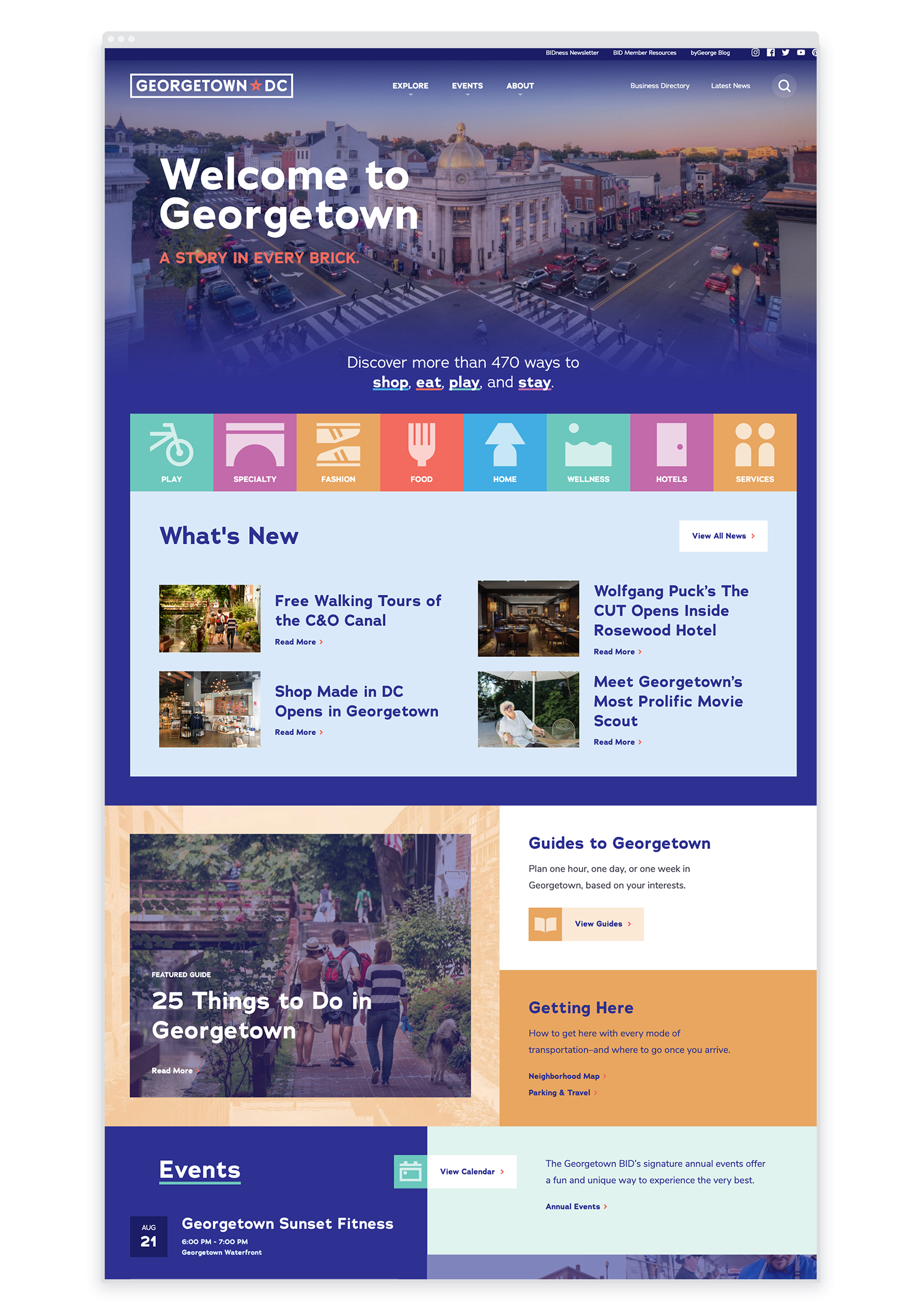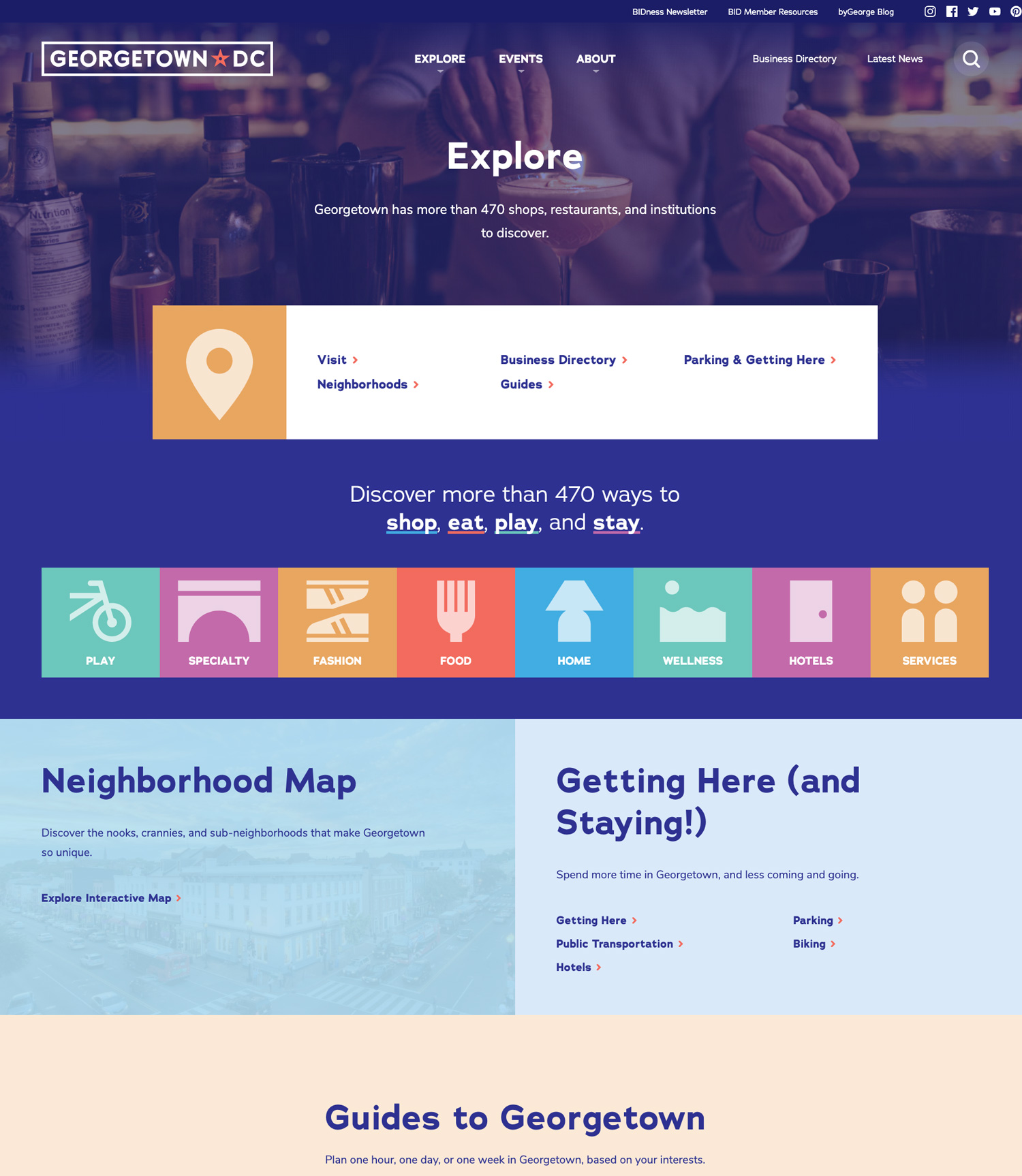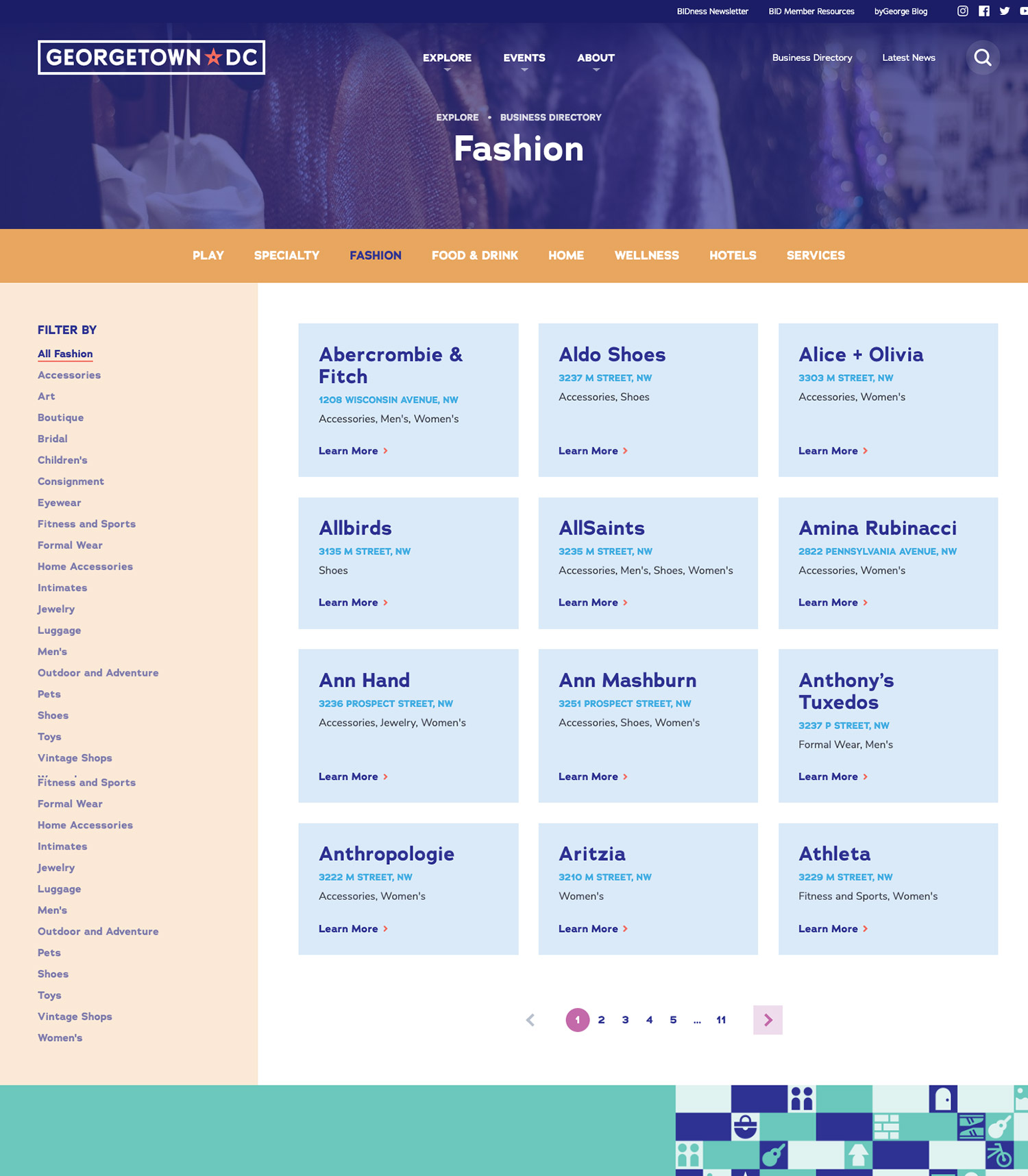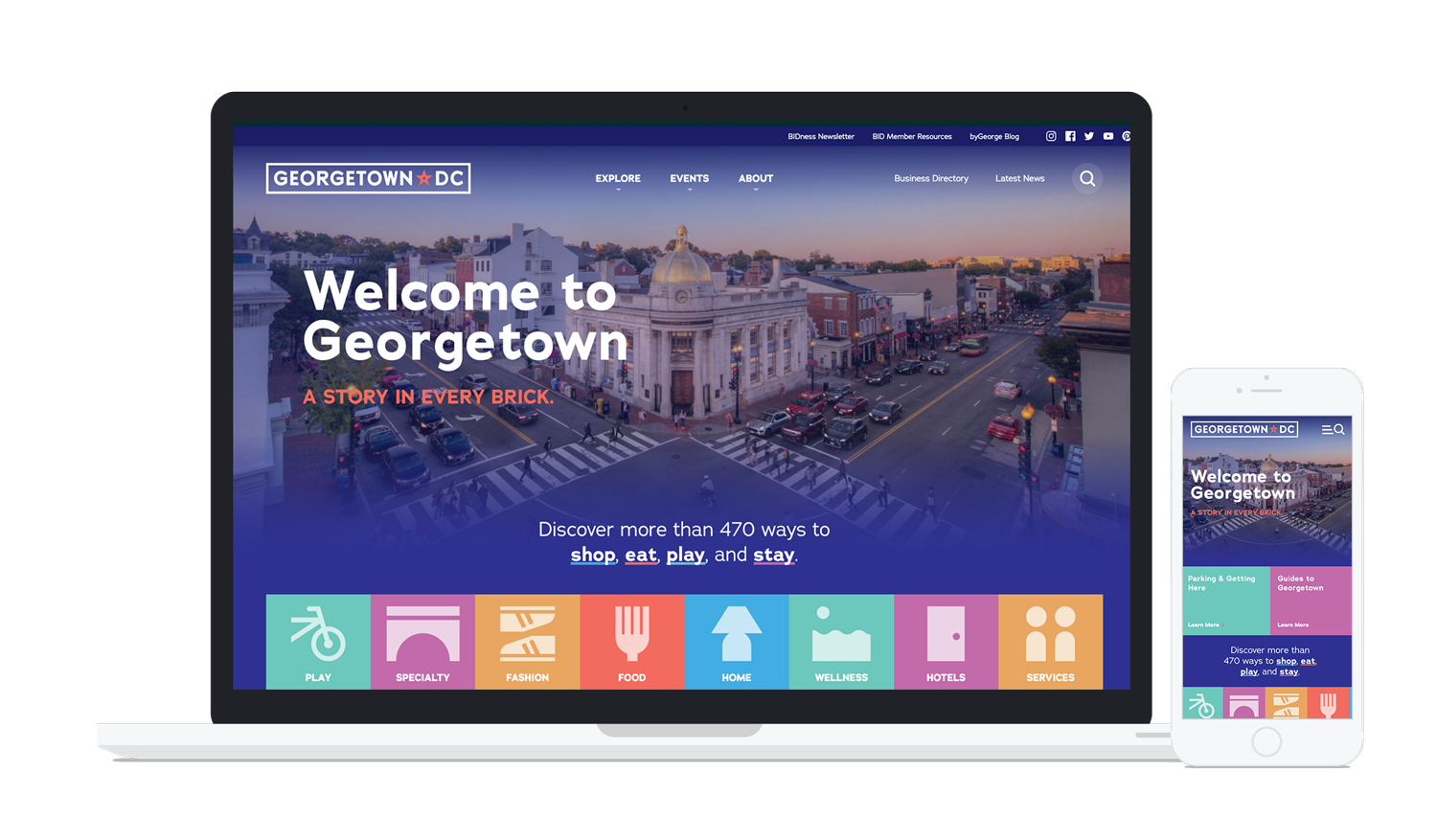
The project’s mortar
This National Historic District is where the past meets the present. Its 18th and 19th century architecture and quaint residential streets house more than 470 shops, restaurants and institutions. In order to clarify the Georgetown Business Improvement District (BID)’s goals and objectives we produced a brand evaluation and competitive analysis, gathered audience insights, and interviewed stakeholders. We worked to identify the personality and tone through strategic workshops and conversations, and to define the relationship between the Georgetown BID and the neighborhood. Collaboration was key to the project’s success; we engaged BID leadership, local business owners, and community members to ensure the positioning, visual design, and website architecture reflected the neighborhood's needs and goals.

A story in every brick
Once we established the personality and direction, we narrowed in on a creative concept that sets Georgetown’s recognizable architectural history on a modern backdrop. All of our conversations kept arising one key detail: Georgetown’s brick architecture and cobblestone streets.

The resulting brand system is flexible enough for us to utilize across their 75 different sub-programs and initiatives, and notably includes a detailed and flexible icon pattern that reflects Georgetown’s diversity of attractions.


Our detailed brand standards help create vibrancy across applications, detailing precisely when and how to use various illustrations, secondary marks, photography, and typography. Our team designed digital ads and physical billboards, emails and notebooks, trash can labels and window decals.




Digital infrastructure
We also built a web platform for Georgetown that combined two information-dense sites into one efficient hub. The result is a digital visitor center, showcasing new Guides that highlight popular features and help visitors structure their time in the neighborhood, while also providing resources to neighborhood business members.



The Georgetown team can curate popular content into the Guides section, and the modular design lets them add new pages and sections without needing our (or any other) technical team, or any programming experience. To power the site, we completed an in-depth integration with Salesforce, allowing Georgetown to sync data between their internal member database and a public business directory filled with almost 500 entries.


Perhaps most important, the Friendly team utilized our user experience design process to conceive and implement a new site navigation that is easy to use. The new site has three main points of navigation to help visitors and residents quickly find what they need. And we made sure the site was easier and faster for everyone. Our team implemented accessibility features to allow visitors to navigate with their keyboard, and we utilized lazy loading to improve page speed—especially on mobile devices.

A quick success, site visitors are already finding Georgetown Guides a valuable planning tool, and the site is proving a powerful resource for residents, tourists, and community leaders alike.
